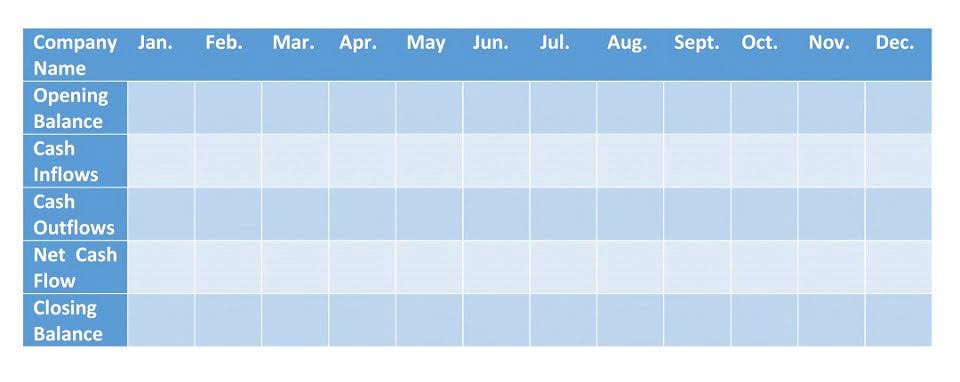To learn more about debits and credits, visit our Explanation of Debits and Credits and our Practice Quiz for Debits and Credits. Income tends to be the category sample chart of accounts that business owners underutilise the most. We provide third-party links as a convenience and for informational purposes only. Intuit does not endorse or approve these products and services, or the opinions of these corporations or organizations or individuals.
What are the main differences between a chart of accounts and a balance sheet?
- Essentially, this is just a list of expenses outlined in alphabetical order.
- Income is often the category that business owners underutilize the most.
- We recommend beginning this process with your balance sheet accounts and then adding your income statement and other necessary accounts.
- The accounts are identified with unique account numbers, and are usually grouped according to their financial statement classification.
- For instance, if you rent, the money moves from your cash account to the rent expense account.
A chart of accounts (COA) is an index of all of the financial accounts in a company’s general ledger. In short, it is an organizational tool that lists by category and line item all of the financial transactions that a company conducted during a specific accounting period. A chart of accounts, or COA, is a list of all your company’s accounts, together in one place, that is a part of your business’s general ledger. It provides you with a birds eye view of every area of your business that spends or makes money. The main account types include Revenue, Expenses, Assets, Liabilities, and Equity. Meanwhile, let’s look at the general ledger real quick because general https://www.bookstime.com/ ledger uses the accounts listed in the chart of accounts to record and organize financial transactions.
How is a chart of accounts organized?
- The “QuickBooks Default” also doesn’t take into account any industry-specific considerations that may impact the success factors of your COA.
- We provide third-party links as a convenience and for informational purposes only.
- Marketing expenses is another expense account to track promotional costs.
- The chart of accounts streamlines various asset accounts by organizing them into line items so that you can track multiple components easily.
- Information is presented in sections that correspond with the balance sheet and income statement categories.
We offer a supportive work environment with a Monday through Friday schedule, even during peak times, to ensure a balanced lifestyle. Our office is conveniently located on the North end of Fort Lauderdale near I-95. At the end of the year, review all of your accounts and see if there’s an opportunity for consolidation. Here’s how to categorize transactions in QuickBooks Online and navigate the COA. Many, or all, of the products featured on this page are from our advertising partners who compensate us when you take certain actions on our website or click to take an action on their website.
Accounting for Medical Practices: Tips and Best Practices
These categories typically include assets, liabilities, shareholder’s equity for the balance sheet, and revenue and expenses for the income statement. A chart of accounts is a tool used to categorize and organize all the financial transactions in a company’s accounting system. On the other hand, a balance sheet is a financial statement that provides a snapshot of a company’s financial position at a specific point in time. The balance sheet is generated using the data from the chart of accounts, which is separated into assets, liabilities, and equity sections.
When setting up a chart of accounts, it’s important to establish a consistent and logical account numbering system. This numbering system, or coding system, assigns an identification code to each account, making it easier to locate and track different transactions. Generally, account numbers consist of digits that represent the various account categories and subcategories. Say you have a checking account, a savings account, and a certificate of deposit (CD) at the same bank. When you log in to your account online, you’ll typically go to an overview page that shows the balance in each account.
Where’d you go to find equity?
Accounting software also minimizes manual data entry by balancing your debits and credits for you. Some charts of accounts use four digits instead of three, but the first digit remains the same. You can use four-digit codes—assets (1000 to 1999) and liability accounts (2000 to 2999). Before recording transactions into the journal, we should first know what accounts https://www.facebook.com/BooksTimeInc/ to use. In the interest of not messing up your books, it’s best to wait until the end of the year to delete old accounts.
Financial Statement
For instance, if you rent, the money moves from your cash account to the rent expense account. Expense accounts allow you to keep track of money that you no longer have. The chart of accounts streamlines various asset accounts by organizing them into line items so that you can track multiple components easily. The opposite side of the non-operating coin occurs when you, for instance, sell an asset – again, not including inventory – for less than book value. You capture this sort of loss in the non-operating category to separate it from typical operating expenses. Maintaining consistency in your COA from year to year is the most important thing when dealing with charts of accounts.








Leave A Comment
You must be logged in to post a comment.